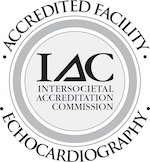3 Ways to Help Prevent Deep Vein Thrombosis

Deep vein thrombosis, or DVT, is a truly concerning condition. To understand it, we must learn more about the circulatory system. Blood is pumped through the heart and around the body. This is why you can feel your pulse, even in your extremities. To get the blood where it needs to go as fast as possible, we have incredibly strong-walled blood vessels known as arteries. These arteries transport blood to the extremities, where smaller blood vessels take them to every cell in our bodies. Our blood delivers oxygen to each of our cells, allowing them to work efficiently and keeping us healthy. However, once the blood is depleted from the arteries, it has to return to the heart, and this is a job taken on by the veins – low-pressure blood vessels that bring the blood back to the heart, where it is pumped to the lungs and re-oxygenated. This process is repeated hundreds of thousands of times each day for the rest of your life.
Veins in our bodies come in two forms. We have the smaller surface veins you can see on the inside of your arm, on the side of your neck, and elsewhere around the body. While puncturing them can cause quite a bit of blood spillage, they are far smaller than our deep veins that run through the core of our extremities and back to the heart.
Despite their size, if blood is not being pumped efficiently throughout the body, there is the possibility for the blood in these deep veins to stagnate and ultimately clot. If this were to happen, the results can be severe. For many, pain in the back of the knee, swelling, and redness indicate possible deep vein thrombosis or DVT. Some or all these symptoms may be present and truly depend on the area that has been blocked as well as the patient’s anatomy itself. Many patients who experience DVT have no symptoms, making this condition even more insidious.
What’s So Important About the Veins?
You may remember when you last had your blood drawn that your phlebotomist punctured a vein and drew blood. You might wonder, what’s the big deal about a blocked deep vein? After all, these low-pressure blood vessels don’t seem to affect our overall health much. With the stagnation, chunks of blood (clots) can begin to form. If they break off, they are transported back to the heart and eventually the lungs, where they can cause a pulmonary embolism. A pulmonary embolism causes physical distress, including shortness of breath, and, if left untreated, can quickly lead to permanent disability or death.
How to Treat or Prevent DVT
Of course, our primary goal is to prevent DVT in the first place. For example, you may have noticed that for some surgeries, you will have cuffs over your feet and calves to ensure proper blood flow. You may be on blood thinners for a time after the procedure. You’ll also be asked to walk around after surgery to ensure adequate blood flow.
Stay Active
Ultimately, activity is the best preventative action for DVT. For example, you’ve likely heard DVT most often discussed in the context of air travel. This is possible but also remains true for people who sit in their office chair for too long, sit in the car for an extended period, or stay in any other longer-term sitting position.
Medication
Prevention and treatment also rely on clot-busting anticoagulant medication. Whether a patient has a non-emergency case of DVT or is presented at the emergency room with significant pain, anticoagulants are often employed to break up the clot safely. Depending on the circumstance, a procedure may be needed to bypass or remove the clot.
Other Medical Equipment
Your cardiologist, vein specialist, or primary care physician may recommend compression stockings to avoid DVT. These stockings use gradual compression along the lower extremities to keep blood flowing more efficiently. However, be sure to speak to your medical team about employing compression stockings as improper fit or use may increase the likelihood of blood clotting issues.
The vein specialists at the Huntington Heart Center can help you get back on track if you believe you have DVT. It is essential to visit a qualified cardiologist or vein specialist at its earliest symptoms to reduce the risk of a pulmonary embolism or other detrimental situations caused by the clot.







